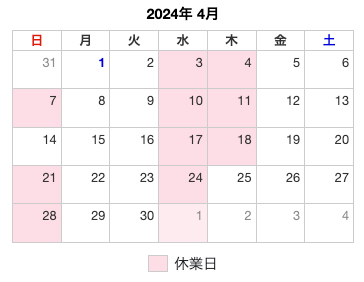Medical Advertising Guidelines

Medical Advertising Guidelines
At Sakae Clinic, effective June 2018, 6"Medical Advertising Guidelines"Accordingly, we are reviewing and improving the description of treatment details, treatment risks, treatment prices, etc. as appropriate.Also, in consideration of the policy of the "Medical Advertising Guidelines", we do not publish any patient testimonials.
We apologize for any inconvenience this may cause to our patients, and appreciate your understanding.
We apologize for any inconvenience this may cause to our patients, and appreciate your understanding.
Medical advertising guidelines are established by the Ministry of Health, Labor and Welfare."Guidelines showing regulations for advertising by medical institutions"You read it right!
Advertising such as medical flyers and billboards was regulated and restricted by the Medical Care Law promulgated in 23.
Although there were voluntary efforts by related organizations regarding homepages, there were no official regulations.
Subsequently, in response to an increase in the number of consultations related to aesthetic medicine such as cosmetic surgery, medical advertising guidelines were updated to regulate misleading advertising expressions on websites.Websites are now subject to regulations like other advertising media, and are subject to corrective orders and penalties.
Advertising such as medical flyers and billboards was regulated and restricted by the Medical Care Law promulgated in 23.
Although there were voluntary efforts by related organizations regarding homepages, there were no official regulations.
Subsequently, in response to an increase in the number of consultations related to aesthetic medicine such as cosmetic surgery, medical advertising guidelines were updated to regulate misleading advertising expressions on websites.Websites are now subject to regulations like other advertising media, and are subject to corrective orders and penalties.
1. Purpose of advertising regulations
1. Regarding partial revisions to the Medical Law
Advertisements related to medical or dental practices, hospitals, or clinics have been restricted by the Medical Act and other regulations from the perspective of protecting users such as patients, but as a general rule, regulations apply to websites of medical institutions. Instead, the government has encouraged related organizations to make voluntary efforts based on the ``Guidelines for Appropriate Content on Medical Institution Home Pages (Medical Institution Home Page Guidelines).''
However, as the number of consultations related to aesthetic medicine increases, the Consumer Commission has proposed that legal regulations on the websites of medical institutions are necessary.
Based on this proposal, a law amending a portion of the Medical Care Law, etc., passed during the ordinary Diet session in 29, makes websites of medical institutions, etc. subject to the same regulations as other advertising media. It was decided to prohibit the display of such information and make it subject to correction orders and penalties.
In this case, if we decide to limit the items that can be advertised on medical institutions' websites, etc., as with other advertising media, there is a risk that the smooth provision of information requested by patients, such as detailed medical treatment contents, may be hindered. Therefore, restrictions on what can be advertised will be lifted under certain conditions.
However, as the number of consultations related to aesthetic medicine increases, the Consumer Commission has proposed that legal regulations on the websites of medical institutions are necessary.
Based on this proposal, a law amending a portion of the Medical Care Law, etc., passed during the ordinary Diet session in 29, makes websites of medical institutions, etc. subject to the same regulations as other advertising media. It was decided to prohibit the display of such information and make it subject to correction orders and penalties.
In this case, if we decide to limit the items that can be advertised on medical institutions' websites, etc., as with other advertising media, there is a risk that the smooth provision of information requested by patients, such as detailed medical treatment contents, may be hindered. Therefore, restrictions on what can be advertised will be lifted under certain conditions.
2.Basic idea
(XNUMX) Responsibilities of those conducting advertisingThose who advertise medical care must strive to convey objective and accurate information so that patients, local residents, etc. can appropriately understand the content of the advertisement and help them make treatment choices.Furthermore, although advertisements have the purpose of attracting patients to see a doctor, they should be carried out as a means of conveying objective and accurate information to users such as patients and local residents. etc., it is necessary to do it of their own will.
(2) Basic concept of prohibited advertisements
According to the provisions of Article XNUMX-XNUMX, Paragraph XNUMX of the Act, advertisements with false content may give patients information that is significantly different from the facts, leading to them losing the opportunity to receive appropriate medical treatment or receiving inappropriate medical care. Due to the danger, it is prohibited with penalties.
From the same perspective, the following advertisements are prohibited pursuant to the provisions of Article XNUMX-XNUMX, Paragraph XNUMX of the Act and Article XNUMX-XNUMX of the Medical Care Law Enforcement Regulations.
Furthermore, it is a matter of course not to advertise content that violates other laws and regulations, such as the Act on Assuring the Quality, Efficacy, and Safety of Pharmaceuticals and Medical Devices, and advertising guidelines related to those laws. We will not conduct any advertisements that are contrary to the purpose of advertisement regulations stipulated by laws and regulations.
Furthermore, advertisements that are inappropriate for medical advertisements, such as advertisements with content that impairs quality, should be strictly avoided.
(3) Basic concept of what can be advertised
Pursuant to the provisions of Article XNUMX-XNUMX, Paragraph XNUMX of the Act, except in cases specified by Ordinance of the Ministry of Health, Labor and Welfare as cases in which there is little risk of hindering the appropriate choice of medical care by the person receiving medical care, ``Matters that can be advertised regarding a doctor's business, hospital, clinic, or midwifery center'', the matters that can be advertised as medical advertisements are information that contributes to patients' treatment selection, etc., and the contents of medical care, etc. This is limited to matters that can be objectively evaluated and verified after the fact.
Similarly, according to the provisions of Paragraph XNUMX of the same article, advertisements with contents that are contrary to public order and morals are prohibited, in addition to so-called comparative excellence advertisements and exaggerated advertisements, as necessary standards for making appropriate choices regarding medical care for patients, etc.In addition, advertising standards are set by ministerial ordinance, and advertising must comply with those standards.The standards for advertisements include advertisements of experiences related to the content or effects of treatments, etc., based on patients' subjective opinions or hearsay, and photographs before and after treatments that may mislead patients, etc., regarding the contents or effects of treatments, etc. Advertising is prohibited.
Furthermore, pursuant to the provisions of Paragraph XNUMX of the same article, matters that can be advertised are limited, except in cases specified by Ministerial Ordinance as cases where there is little risk of hindering appropriate choices regarding medical care by patients, etc. (see Section XNUMX). Therefore, advertisements other than those that can be advertised are prohibited.
(5) Experiences regarding the contents or effects of treatment, etc., based on the subjectivity of patients, etc.
Article XNUMX-XNUMX, Item XNUMX of the Ministerial Ordinance stipulates that "advertisements of experiences regarding the contents or effects of treatments, etc. based on the subjectivity or hearsay of patients or others" shall mean that medical institutions must This means introducing subjective experiences based on patients' own experiences and hearsay from their families, etc., with the aim of attracting patients to the medical institution concerned, regarding the content or effects of such experiences. is not acceptable as a medical advertisement, considering that opinions will naturally differ depending on the condition of each individual patient, and there is a risk of misunderstanding.
This means that even if the content of the patient's experience story is within the scope of advertising, advertising is not permitted.In addition, when posting testimonials on websites operated by individuals, personal pages on SNS, and so-called word-of-mouth sites operated by third parties, medical institutions will post expenses such as advertising fees for convenience. If there is no inducement, such as by requesting an advertisement, it does not fall under advertising.
(6) Photographs before or after treatment, etc. that may mislead patients, etc. regarding the content or effects of treatment, etc.
As stipulated in Article XNUMX-XNUMX, Item XNUMX of the Ministerial Ordinance, ``advertising before or after photos, etc. of treatments, etc. that may mislead patients, etc. regarding the content or effects of treatments, etc. is prohibited.'' This refers to so-called before and after photos, etc., but given that the results of treatment etc. naturally vary depending on the condition of each individual patient, photos etc. that are likely to mislead are not accepted as medical advertisements. It must be something that cannot be done.
Additionally, this does not apply if pre- or post-operative photographs are accompanied by detailed explanations of the details of treatment, costs, etc. that are normally required, or matters related to the main risks of treatment, side effects, etc. To be something.
Furthermore, the location of this information should be given due consideration so that it is easy for patients and others to understand, such as posting it on a linked page or posting it in extremely small font compared to information about benefits and advantages. Do not use formats such as
Please note that matters related to treatment effects are not admissible matters, and therefore, pre- and post-operative photos, etc., cannot be advertised unless they meet the requirements set forth in Section XNUMX and are not eligible for restriction release.
(2) Basic concept of prohibited advertisements
According to the provisions of Article XNUMX-XNUMX, Paragraph XNUMX of the Act, advertisements with false content may give patients information that is significantly different from the facts, leading to them losing the opportunity to receive appropriate medical treatment or receiving inappropriate medical care. Due to the danger, it is prohibited with penalties.
From the same perspective, the following advertisements are prohibited pursuant to the provisions of Article XNUMX-XNUMX, Paragraph XNUMX of the Act and Article XNUMX-XNUMX of the Medical Care Law Enforcement Regulations.
- (i) Comparatively superior advertisement
- (ii) Hyperbole
- (iii) Advertisements with content that is contrary to public order and morals
- (iv) Advertisements of experiences regarding the contents or effects of treatments, etc., based on patient or other person's subjective opinion or hearsay
Furthermore, it is a matter of course not to advertise content that violates other laws and regulations, such as the Act on Assuring the Quality, Efficacy, and Safety of Pharmaceuticals and Medical Devices, and advertising guidelines related to those laws. We will not conduct any advertisements that are contrary to the purpose of advertisement regulations stipulated by laws and regulations.
Furthermore, advertisements that are inappropriate for medical advertisements, such as advertisements with content that impairs quality, should be strictly avoided.
(3) Basic concept of what can be advertised
Pursuant to the provisions of Article XNUMX-XNUMX, Paragraph XNUMX of the Act, except in cases specified by Ordinance of the Ministry of Health, Labor and Welfare as cases in which there is little risk of hindering the appropriate choice of medical care by the person receiving medical care, ``Matters that can be advertised regarding a doctor's business, hospital, clinic, or midwifery center'', the matters that can be advertised as medical advertisements are information that contributes to patients' treatment selection, etc., and the contents of medical care, etc. This is limited to matters that can be objectively evaluated and verified after the fact.
Part 3 About prohibited advertisements
XNUMX Contents of advertisements subject to prohibition
According to the provisions of Article XNUMX-XNUMX, Paragraph XNUMX of the Act, the content is false because there is a risk of giving patients, etc. information that is significantly different from the facts, causing them to lose the opportunity to receive appropriate medical treatment or receive inappropriate medical care. Advertising is prohibited with penalties.Similarly, according to the provisions of Paragraph XNUMX of the same article, advertisements with contents that are contrary to public order and morals are prohibited, in addition to so-called comparative excellence advertisements and exaggerated advertisements, as necessary standards for making appropriate choices regarding medical care for patients, etc.In addition, advertising standards are set by ministerial ordinance, and advertising must comply with those standards.The standards for advertisements include advertisements of experiences related to the content or effects of treatments, etc., based on patients' subjective opinions or hearsay, and photographs before and after treatments that may mislead patients, etc., regarding the contents or effects of treatments, etc. Advertising is prohibited.
Furthermore, pursuant to the provisions of Paragraph XNUMX of the same article, matters that can be advertised are limited, except in cases specified by Ministerial Ordinance as cases where there is little risk of hindering appropriate choices regarding medical care by patients, etc. (see Section XNUMX). Therefore, advertisements other than those that can be advertised are prohibited.
(5) Experiences regarding the contents or effects of treatment, etc., based on the subjectivity of patients, etc.
Article XNUMX-XNUMX, Item XNUMX of the Ministerial Ordinance stipulates that "advertisements of experiences regarding the contents or effects of treatments, etc. based on the subjectivity or hearsay of patients or others" shall mean that medical institutions must This means introducing subjective experiences based on patients' own experiences and hearsay from their families, etc., with the aim of attracting patients to the medical institution concerned, regarding the content or effects of such experiences. is not acceptable as a medical advertisement, considering that opinions will naturally differ depending on the condition of each individual patient, and there is a risk of misunderstanding.
This means that even if the content of the patient's experience story is within the scope of advertising, advertising is not permitted.In addition, when posting testimonials on websites operated by individuals, personal pages on SNS, and so-called word-of-mouth sites operated by third parties, medical institutions will post expenses such as advertising fees for convenience. If there is no inducement, such as by requesting an advertisement, it does not fall under advertising.
(6) Photographs before or after treatment, etc. that may mislead patients, etc. regarding the content or effects of treatment, etc.
As stipulated in Article XNUMX-XNUMX, Item XNUMX of the Ministerial Ordinance, ``advertising before or after photos, etc. of treatments, etc. that may mislead patients, etc. regarding the content or effects of treatments, etc. is prohibited.'' This refers to so-called before and after photos, etc., but given that the results of treatment etc. naturally vary depending on the condition of each individual patient, photos etc. that are likely to mislead are not accepted as medical advertisements. It must be something that cannot be done.
Additionally, this does not apply if pre- or post-operative photographs are accompanied by detailed explanations of the details of treatment, costs, etc. that are normally required, or matters related to the main risks of treatment, side effects, etc. To be something.
Furthermore, the location of this information should be given due consideration so that it is easy for patients and others to understand, such as posting it on a linked page or posting it in extremely small font compared to information about benefits and advantages. Do not use formats such as
Please note that matters related to treatment effects are not admissible matters, and therefore, pre- and post-operative photos, etc., cannot be advertised unless they meet the requirements set forth in Section XNUMX and are not eligible for restriction release.




